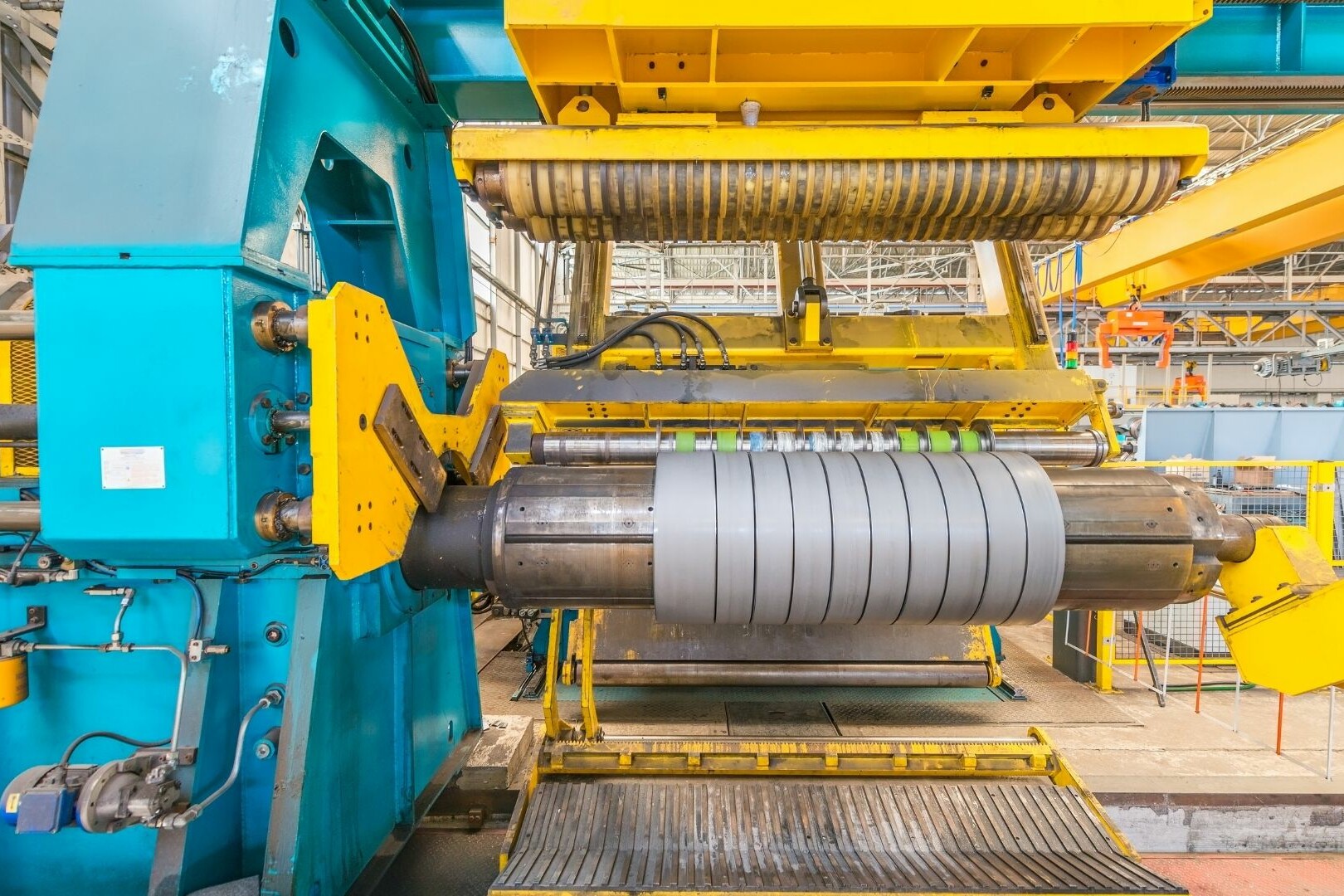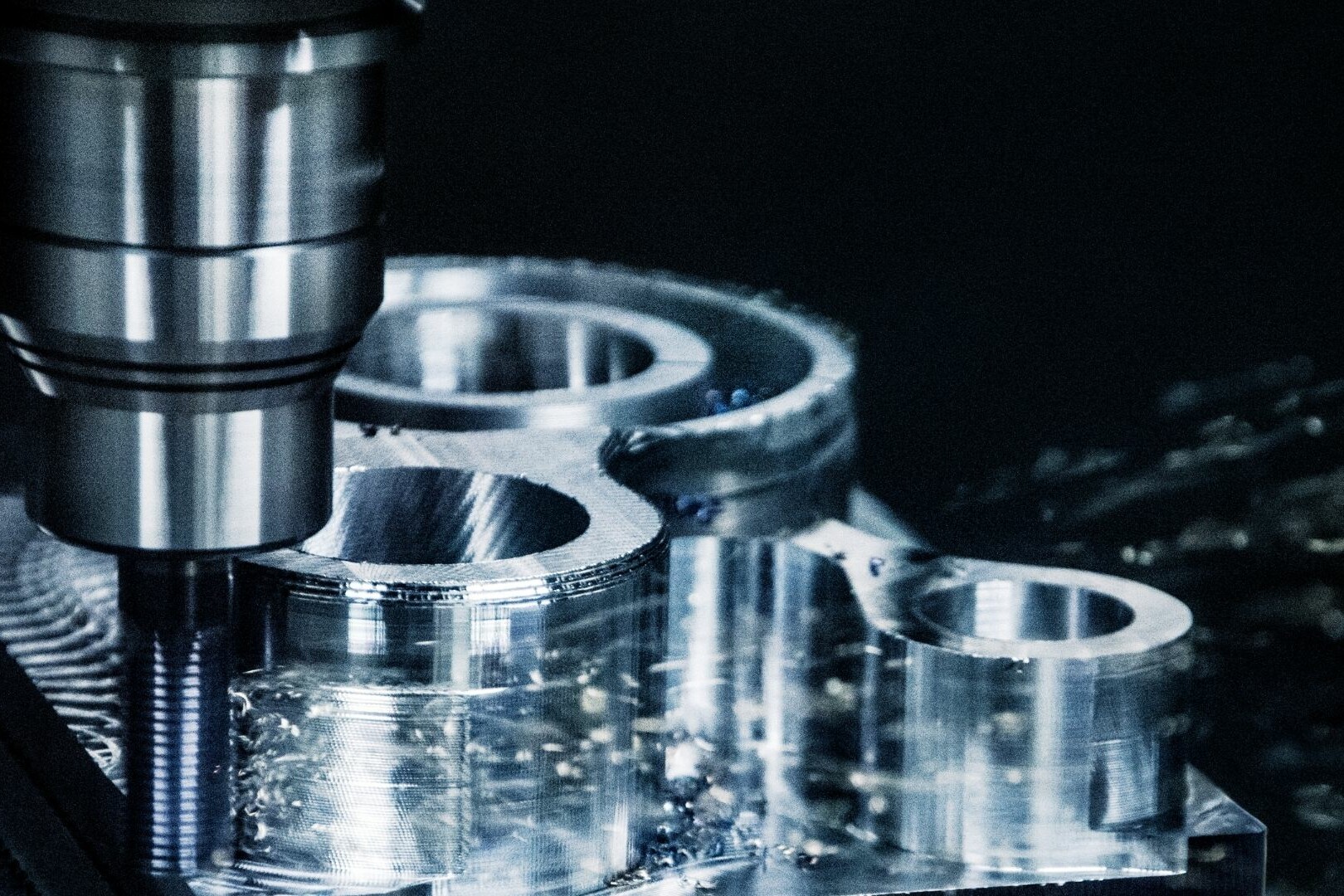Vibration Analysis Fundamentals
Heavy Point: In vibration analysis, the heavy point refers to the angular position of an unbalance vector on a rotating shaft. It plays a crucial role in understanding and mitigating the effects of unbalance in machinery.
Unbalance: Unbalance is a condition characterized by an unequal distribution of mass in a rotating object, causing the mass axis to differ from the bearing axis. This results in vibrations and can lead to machinery issues.
Subharmonic: A subharmonic is a sinusoidal quantity with a frequency that is a fractional multiple of the fundamental frequency. It is a key concept in analyzing vibrations and waveforms.
Analog Signal: An analog signal is a continuous, time-varying signal that represents data in a continuously variable form, such as vibrations. It is distinct from digital signals and is crucial in vibration analysis.
Analog to Digital Converter (ADC): An Analog to Digital Converter is a system used to convert analog signals, like vibration data, into a digital format. This conversion is essential for further processing and analysis.
Discrete Fourier Transform: The Discrete Fourier Transform is a mathematical method used to calculate discrete frequency components in sampled time data. It helps identify specific frequency components in vibration signals.
Resolution: Resolution in vibration analysis refers to the smallest change in stimulus that produces a detectable change in instrument output. It’s a critical factor in precision measurements.
Displacement: Displacement measures the change in position of an object relative to a reference point. In vibration analysis, it helps quantify the movement caused by vibrations.
Rectangular Window: A rectangular window is a measurement window function used in vibration analysis. It affects how vibration data is processed, providing insights into vibration characteristics.
Frequency: Frequency represents the rate of repetition of a periodic event and is a fundamental parameter in vibration analysis. It helps define the vibrational properties of machinery.
Phase: Phase is a measurement of the timing relationship between two signals or vibration events. It is often crucial in determining the synchronization of vibration patterns.
Frequency Modulation (FM): Frequency Modulation is a process where the frequency of a carrier signal is modulated by the amplitude of a modulating signal. It can affect vibration signals and their analysis.
Hanning Window: The Hanning window is a specific window function used in vibration analysis. It shapes vibration data to provide better frequency resolution and noise reduction.
Fast Fourier Transform (FFT): The Fast Fourier Transform is a computational method used to transform time-domain data into the frequency domain. It is essential for analyzing vibration spectra.
Fourier Transform: The Fourier Transform is a mathematical tool that converts a time-domain signal into its frequency components, enabling the analysis of vibration frequencies.
Phase Difference: Phase difference measures the time offset between two signals or vibrations. It is essential for understanding the relative timing of events in vibration analysis.
Wavelength: Wavelength is the distance between two consecutive points of a vibration waveform, representing a complete cycle. It is a key parameter in characterizing vibrations.
Amplitude: Amplitude refers to the magnitude of dynamic motion or vibration. It quantifies the strength or intensity of vibrations, aiding in their analysis.
Amplitude Modulation (AM): Amplitude Modulation is a process where the amplitude of a carrier signal is varied by a modulating signal. It can impact the characteristics of vibration signals.
Power Spectral Density (PSD): Power Spectral Density measures the strength of frequency variations in a signal. In vibration analysis, it reveals which frequency changes are significant.
Noise: Noise in vibration analysis refers to unwanted interference that distorts vibration signals. Identifying and filtering out noise is essential for accurate analysis.
Harmonics: Harmonics are frequency components at integer multiples of the fundamental frequency. They play a crucial role in characterizing vibrations in machinery.
Hertz (Hz): Hertz is the unit of frequency, representing cycles per second. It is commonly used to express vibration frequencies.
Spectral Leakage: Spectral Leakage is a phenomenon where the frequency spectrum of a signal exhibits leakage or spread due to finite data sampling. It can affect frequency analysis.
Time Waveform Analysis: Time Waveform Analysis involves examining the time-domain representation of vibration signals to detect transient events, impacts, or irregularities. It aids in identifying vibration patterns.
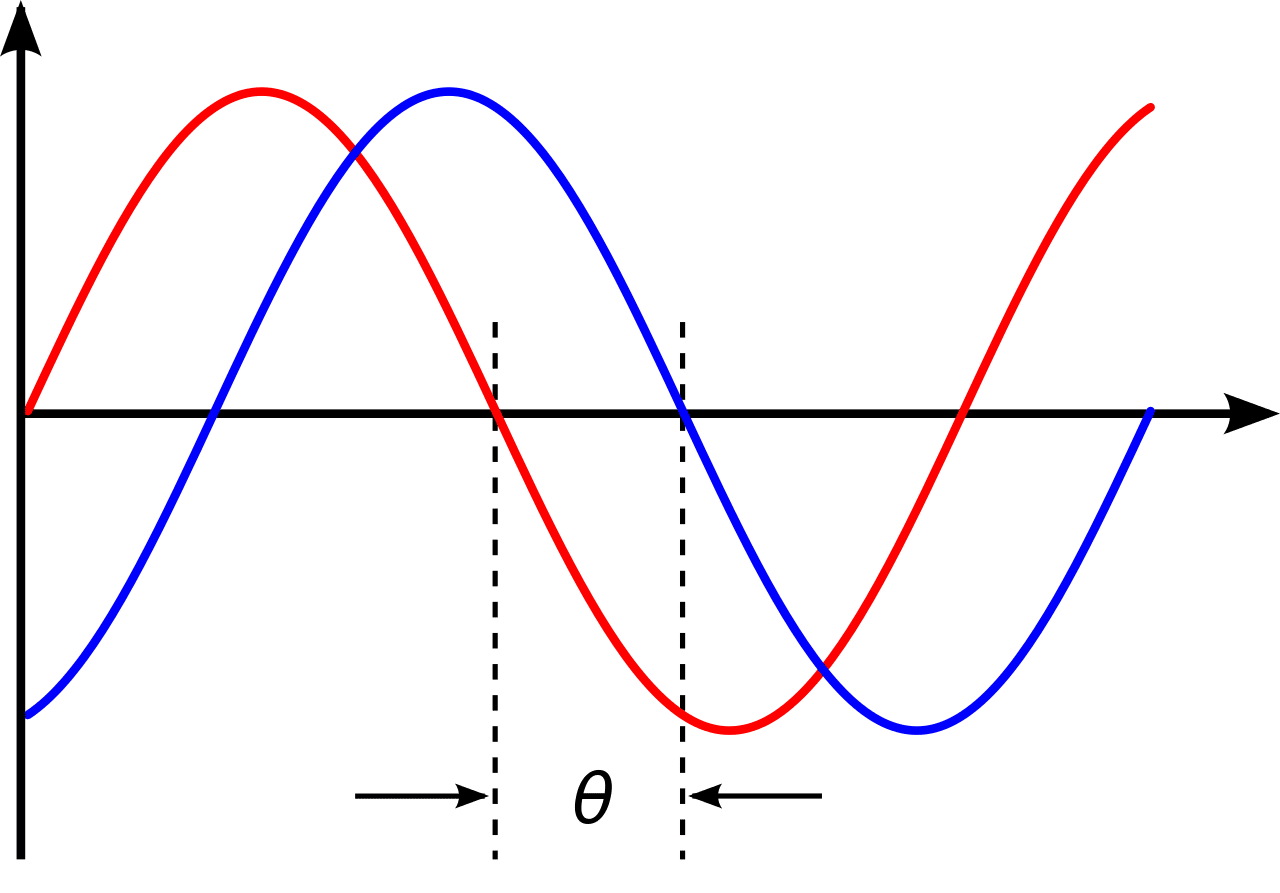
Fig. 1 Phase Difference
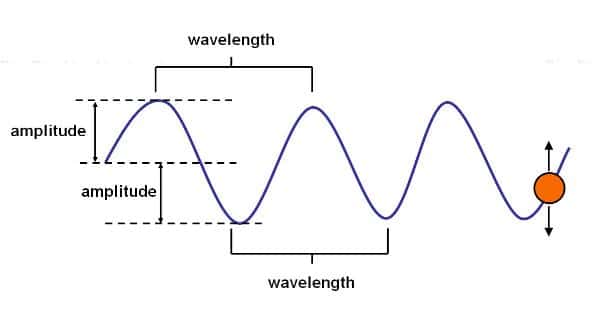
Fig. 2 Wavelength
Vibration Measurement and Sensors
Acceleration: Acceleration refers to the rate of change of velocity of an object. In vibration analysis, it’s a crucial parameter for measuring and quantifying the intensity of vibrations.
Accelerometer: An accelerometer is a device used to measure acceleration, including vibrations. It plays a key role in collecting vibration data for analysis and monitoring.
Gyroscope: A gyroscope is a device that detects angular velocity and is utilized to understand rotational motion and orientation. In some cases, it can complement vibration data for comprehensive analysis.
Calibration: Calibration involves a series of operations and settings to establish the accuracy of a measuring instrument or system. It ensures the reliability of vibration measurement equipment.
Sensor Placement: Sensor placement refers to the strategic positioning of vibration sensors on machinery or structures to ensure accurate and representative data collection for analysis.
MEMS Sensor: MEMS (Micro-Electro-Mechanical Systems) sensors are miniature devices used to measure acceleration and other parameters in vibration monitoring. They offer high precision in industrial applications.
Machinery and Component Analysis
Rolling Element Bearing: A rolling element bearing is a type of bearing that reduces friction using rolling elements such as balls or rollers. It’s essential in machinery and requires analysis for maintenance.
Misalignment: Misalignment refers to the improper positioning of machine components relative to each other, leading to vibrations and potential machinery issues. Analysis helps detect and rectify misalignment.
Balancing: Balancing is a procedure used to adjust the mass distribution of a rotor to minimize vibrations. It aims to ensure that the mass centerline aligns with the rotor’s geometric centerline.
Balanced Condition: In rotating machinery, a balanced condition is achieved when the shaft’s geometric centerline coincides with the mass centerline, reducing vibration levels.
Gear Mesh Frequency: Gear mesh frequency is a potential vibration frequency in machines containing gears. It’s calculated based on the number of gear teeth and the rotational frequency of the gear.
Order: In rotating machines, orders are multiples or harmonics of the rotation speed. Analyzing vibration spectra orderly is crucial, especially when machine speed varies.
BPFI (Ball Pass Frequency Inner): BPFI, or Ball Pass Frequency Inner, is a common abbreviation for the frequency of defects on inner bearing races. It’s a key parameter in vibration analysis.
BPFO (Ball Pass Frequency Outer): BPFO, or Ball Pass Frequency Outer, is a common abbreviation for the frequency of defects on outer bearing races. It’s significant in identifying bearing issues.
BSF (Ball Spin Frequency): BSF, or Ball Spin Frequency, is the frequency at which balls rotate around their centerline in a bearing. It’s an essential fault frequency in vibration analysis.
Journal Bearing: A journal bearing is a type of bearing that supports a shaft on a thin oil film. It can be either hydrodynamic or hydrostatic and requires analysis for optimal performance.
Mechanical Looseness: Mechanical looseness is a condition caused by improper fits or looseness between components. It often results in abnormal vibrations, requiring analysis for detection.
Mechanical Eccentricity: Mechanical eccentricity refers to the change in the outer diameter of a shaft surface compared to its true geometric centerline. Analysis helps identify this issue.
Mechanical Secretion: Mechanical secretion is the difference between the displacement probe and the shaft’s centerline position due to rolling and surface defects. Analysis reveals this condition.
Reciprocating Machinery: Reciprocating machinery consists of components that move back and forth in a linear motion. It poses unique challenges in vibration analysis due to its motion pattern.
Harmonic Balancing: Harmonic balancing is a procedure used to correct unbalance in rotating machinery. It involves adding or removing weight at specific angles to eliminate harmonic components in vibrations.
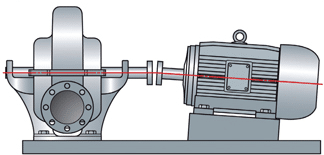
Fig. 3 Misalignment
Vibration Analysis Techniques
Vibration Spectrum Analysis: Vibration spectrum analysis involves converting time-domain vibration signals into frequency-domain spectra to identify specific frequency components and their characteristics.
Time Synchronous Averaging (TSA): Time synchronous averaging aligns vibration data with the rotational position of a machine, allowing the detection of defects or anomalies occurring at specific positions within a rotation.
Phase Resolved Analysis: Phase resolved analysis involves dividing a vibration signal into smaller segments based on phase information to analyze individual components contributing to overall vibration.
Modal Analysis: Modal analysis is used to determine the dynamic characteristics of a structure, including its natural frequencies, damping values, and mode shapes.
Mode Shape: Mode shape represents the shape a structure takes while vibrating at its natural frequency, providing insights into its behavior.
Modal Damping: Modal damping measures the amount of energy dissipation in a vibrating system per cycle, affecting how quickly vibrations decay after being excited.
Predictive Maintenance Concepts
Condition Monitoring: Condition monitoring involves the continuous or periodic collection and analysis of equipment data, including vibration, to assess its condition and detect potential faults.
Condition-Based Maintenance (CBM): CBM relies on real-time monitoring and analysis of equipment condition, including vibration data, to determine when maintenance is needed, reducing downtime.
Machine Learning: Machine learning algorithms are increasingly used in predictive maintenance to analyze vibration data and detect patterns indicative of potential faults.
Monitoring and Maintenance Tools
Vibration Severity Standards: Vibration severity standards are established industry guidelines that define acceptable levels of vibration for different machinery and components, ensuring reliability.
Vibration Analysis Software: Vibration analysis software tools are designed for processing, analyzing, and visualizing vibration data, aiding in fault diagnosis and condition monitoring.
Thermography: Thermography uses thermal imaging cameras to detect temperature variations in equipment, identifying overheating components as potential fault indicators.
Ultrasonic Testing: Ultrasonic testing employs high-frequency sound waves (ultrasound) to detect changes in material thickness, locate defects, and identify leaks in structures and machinery.
Baseline Spectrum: A baseline spectrum is a vibration spectrum taken when machinery is in good working condition, serving as a reference for ongoing monitoring and analysis.
Trend: A trend is a graphical representation of vibration levels versus elapsed time, providing insights into equipment behavior over time.
Route-Based Monitoring: Route-based monitoring involves collecting data at predetermined intervals or routes throughout a facility using handheld or portable vibration analyzers.
Specialized Vibration Analysis
Cavitation: Cavitation occurs in liquid-handling machinery when pressure decreases in the suction line, leading to fluid vaporization, mixed flow, and potentially harmful vibrations.
Oil Whirl/Whip: Oil whirl and oil whip are constant vibrations in machinery caused by insufficient fluid film bed load support, often related to bearing and resonance issues.
Harmonic Analysis: Harmonic analysis identifies and quantifies individual harmonic components within a complex vibration signal, essential for diagnosing rotating machinery issues.
Blade Pass Frequency (BPF): BPF represents the speed at which blades pass through a fixed position in equipment like fans or turbines, critical for vibration analysis.
Resonance: Resonance is a state of vibration response caused by a system’s sensitivity to a specific forcing frequency, leading to significant amplitude increases and phase shifts.
Critical Speeds: Critical speeds are rotational speeds associated with high vibration amplitudes, often corresponding to natural frequencies of the system.
Criticality Index: The criticality index assesses the importance of a machine, considering factors like redundancy, repair costs, and condition monitoring.
Finite Element Modeling: Finite element modeling is a computer-aided engineering technique used to predict the dynamic behavior of mechanical systems before production, aiding in vibration analysis and optimization.
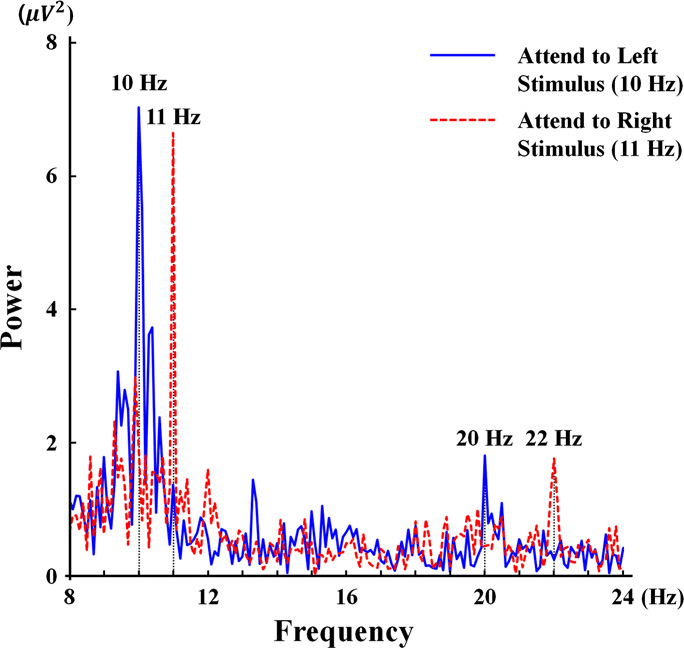
Fig. 4 Power Spectral Density
Advanced Concepts
Crest Factor: Crest factor is the ratio of the peak value of a waveform to its root mean square (RMS) value. It quantifies the shape of a waveform and can indicate impulsive or shock-like vibrations.
Enveloping: Enveloping is a technique in vibration analysis used to extract modulation information from a signal, often detecting early signs of bearing and gear faults through amplitude modulation analysis.
Transient Vibration: Transient vibration refers to short-duration vibrations occurring in response to sudden changes in operating conditions, such as startup, shutdown, or abrupt load changes.
Frequency Response Function (FRF): FRF describes a system’s steady-state response to a sinusoidal input across different frequencies. It is crucial in modal analysis and structural dynamics.
Non-destructive Testing (NDT): NDT encompasses techniques and methods to assess material, component, or system properties without causing damage. In predictive maintenance, NDT methods like ultrasound and thermography complement vibration analysis.
Vibration Sensor: A vibration sensor is a device used to measure and capture vibration data. This includes accelerometers, velocity sensors, and displacement sensors, providing critical data for analysis.
Vibration Signature: A vibration signature represents the unique vibration pattern associated with a specific machine or component. Changes in the signature can indicate developing faults.
Sensor Placement: Sensor placement involves strategically positioning vibration sensors on machinery or structures to ensure accurate and representative data collection for analysis.
Bode Plot: A Bode plot is a graphical representation of a system’s frequency response, displaying amplitude and phase information as a function of frequency. It aids in analyzing control system stability and behavior.
Time Waveform Analysis: Time waveform analysis examines the time-domain representation of a vibration signal to detect transient events, impacts, or irregularities in the waveform.
Condition Indicator: A condition indicator is a quantitative parameter derived from vibration data, such as peak amplitude, kurtosis, or crest factor. It serves as an indicator of machine health.
Vibration Monitoring: Vibration monitoring involves continuous or periodic data collection and analysis of machine and structural vibrations to assess their condition and detect potential faults.
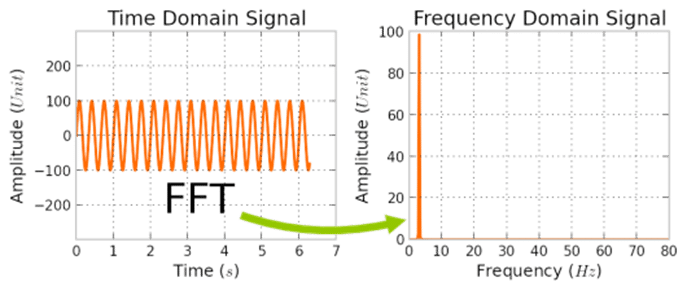
Fig. 5 Fourier Transform

Fig. 6 Cavitation of Impeller
Journal Bearing: It is a bearing that supports the shaft on a thin oil film. The liquid film layer can be produced by journal rotation (hydrodynamic bearing) or by externally applied pressure (hydrostatic bearing).
Cut-off Frequency: The cut-off frequency is a limit in a system’s frequency response at which the energy flowing through the system begins to be reduced rather than passing through it. In general, cut-off frequency in filters is applied to an edge with low pass, high pass, band pass or band stop feature.It is applied to reduce the noise in the system.
Critical Speeds: It is generally any rotational speed associated with high vibration amplitude. Often times the rotor corresponds to the natural frequencies of the system.
Criticality Index: The Criticality Index is often used to determine the purpose of the machine, redundancy (i.e. is there a standby machine that can take over if the machine fails), the cost of repairs, the degree of condition monitoring on a particular machine, taking into account downtime effects.
Critical Machinery: They are critical equipments for most of the plant process. Failure of these machines also affects other machines and causes downtime in the system.
Mechanical Looseness: It is a phenomenon caused by mechanical looseness or improper fit between component parts can often be characterized by abnormally high amplitudes long frequency harmonics or 1/2 rotating frequency harmonics.
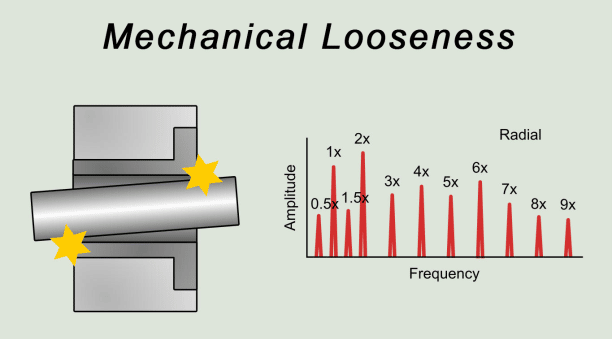
Fig. 7 Mechanical Looseness
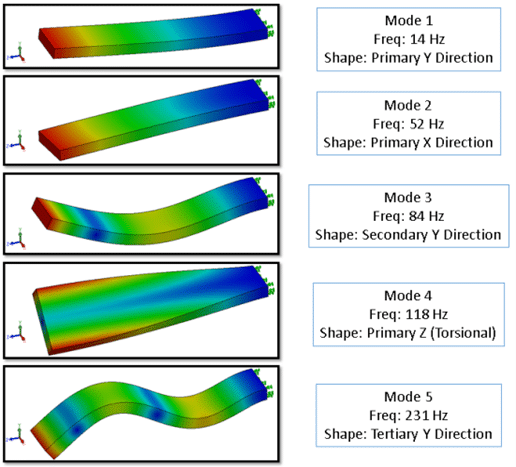
Fig. 8 Mode Shapes
Modulation: Modulation is the replacement of a parameter of a signal by the effect of another signal.
Nyquist Frequency: In the process of converting from analog to digital, the input signal must first be sampled. If the signal contains any information at frequencies above half the sampling frequency, the signal will not be sampled correctly and the sampled version of the signal will contain false components due to the aliasing phenomenon. The maximum frequency that can be accurately sampled is called the Nyquist frequency and is equal to half the sampling rate.
Root Mean Square(RMS): It is a statistical criterion used to measure the size of varying amounts. It is particularly useful in waves where the change is positive and negative. DSAs perform digital averaging RMS relative to the frequency line in consecutive vibration spectra.
Sample Size: It is the number of samples used in a DSA (Dynamic Signal Analyzer) to calculate the Fast Fourier Transform. It is also the number of samples in a time indicator.
Sampling Rate: It determines how often the analog-digital conversion will occur. High sampling rate gives more precise values. According to the Nyquist Theorem, the Sampling Rate should be fs ≥ 2×fmax.
Aliasing: A phenomenon, which can occur whenever a signal is not sampled at greater than twice the maximum bandwidth of the signal. Causes high frequency signals to appear at low frequencies. Aliasing is minimized by filtering the signal to a bandwidth less than ½ the sample rate.
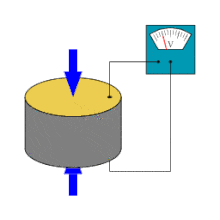
Fig. 9 Piezoelectric
Windowing: Each part of the signals before processing is called a window. Window functions are multiplier functions that highlight the middle of the signal segments. It is used to minimize spectral leaks.
Period: The time required for a complete oscillation or a single event cycle. (T = 1/f)
Piezoelectric: Any material that converts between mechanical and electrical energy. For the piezoelectric crystal, when mechanical stresses are applied to opposite sides, electrical charges are seen on the other pairs.
Radial Vibration: Shaft dynamic motion or body vibration in the direction perpendicular to the shaft centerline.
Resonance: It is the state of the vibration amplitude and phase change response caused by a system sensitivity corresponding to a certain forcing frequency when it coincides with the natural frequency of the system. Resonance is typically defined by a significant amplitude increase and associated phase shift.
Degrees of Freedom: It is a term used in mechanical vibrations to describe the complexity of the system. The number of degrees of freedom is the number of independent variables that describe the state of a vibrating system.
Free Vibration: A type of vibration that occurs in systems that are given an initial motion and then released to release freely.
Finite Element Modeling: It is a computer-aided engineering technique for predicting the dynamic behavior of a mechanical system before production. For example, FEM can be used to estimate the natural frequencies of a flexible rotor.
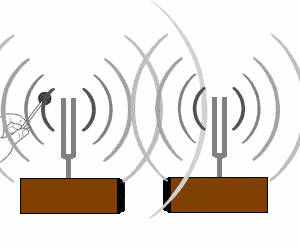
Fig. 10 Resonance
Damping: The effect on an oscillation system that has the effect of reducing, restricting or preventing its oscillations. In physical systems, damping is produced by processes that dissipate the energy stored in the oscillation.
Spectral Leakage: If it is desired to draw the frequency spectrum of a single frequency sinusoidal wave, there will be a single straight line on its frequency value. However, when samples of this wave are taken and processed with FFT, not a single line in the resulting frequency spectrum, but a curve covering frequencies close to the frequencies it has, is encountered. This situation is called “spectral leakage”.
Baseline Spectrum: It is a vibration spectrum taken when a machine is in good working order.It is used as a reference for monitoring and analysis.
Trend: Trend is a graph of vibration level versus elapsed time. Most of the trend vibration data is made by vibration monitoring software and is usually designed to display the vibration level at certain key frequencies over several months or years.
Flattop Window: It is the FFT window function that provides the best amplitude accuracy for measuring discrete frequency components.
Oil Whirl/Whip: It is a constant vibration where the unit load of the fluid film bed is insufficient. In this condition, the shaft centerline dynamic motion is generally circular in the direction of rotation. Oil vortex occurs at the oil flow rate in the bearing, usually 40% to 49% of the shaft speed. Oil Whip occurs when the rotation frequency coincides with a shaft resonance frequency and is locked.
Fatigue: Metal fatigue is a condition in which a metal will lose strength and eventually crack when subjected to too much flex near its elastic limit. If vibrations are not controlled it can cause metal fatigue.
High Pass Filter: It is a high-frequency pass filter with a transmission band starting at a lower cutoff frequency and extending (theoretically) to infinite frequency.
Recommended Blog Posts
September 4, 2023
Powerful Signal Analysis Tools for Vibration Analysis
Predictive maintenance, crucial for machinery reliability, heavily relies on vibration analysis. Techniques like FFT…
September 4, 2023
Rotating Machinery Vibration Analysis
Vibration analysis is a critical tool in various industries like manufacturing, power generation, and transportation.…
December 28, 2022
Fault Diagnostic Technique Using Machine Mode Similarity Analysis
AI can diagnose machine faults with vibration data but machine mode similarity analysis is an alternative, it uses…
September 15, 2022
Understanding Rotating Machinery Data
Machine data is generated by physical attributes and actions of machines, collected by sensors and analyzed for…
August 6, 2021
Envelope Analysis
Bearings are critical elements in rotating machines, they support radial and axial loads, and reduce friction. Real…
May 6, 2021
What is Cepstral Analysis?
Cepstral Analysis, a tool used to detect periodicity in frequency spectrum, can be useful in gearbox fault detection in…
October 9, 2020
How is Fault Detection Performed?
Vibration measurements and analysis, using multiple parameters, can identify developing problems in machinery before…
September 21, 2020
Parameter Selections in Vibration Measurement
Vibration measurements are used to determine the response of machines to forces and identify potential issues. It is…
September 4, 2020
What is Vibration Analysis?
Vibration analysis can be used to discover problems in machines and predict when they might fail. It can significantly…
Related Products
Sensemore Predictive Maintenance Solution
If you enjoyed this blog, explore our Predictive Maintenance Solution page.




